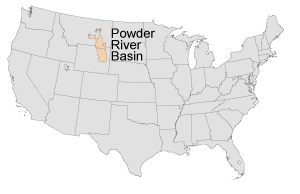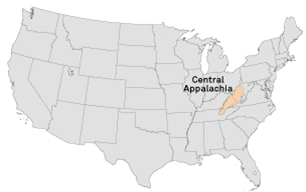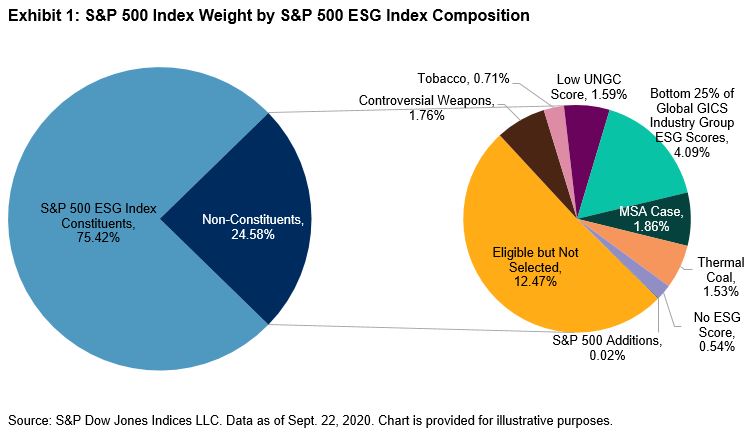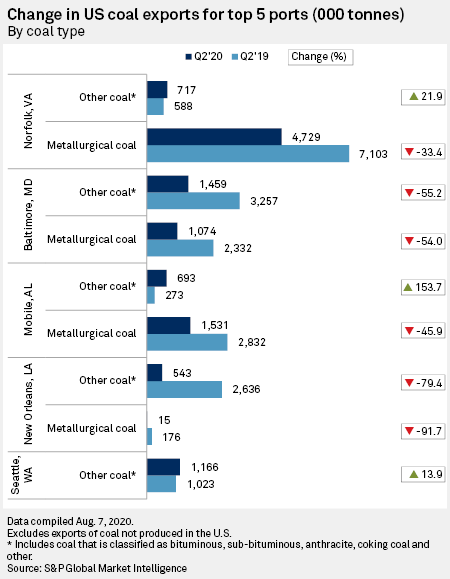S&P Global Offerings
Featured Topics
Featured Products
Events
S&P Global Offerings
Featured Topics
Featured Products
Events
S&P Global Offerings
Featured Topics
Featured Products
Events
Featured Products
Ratings & Benchmarks
By Topic
Market Insights
About S&P Global
Corporate Responsibility
Culture & Engagement
Investor Relations
Featured Products
Ratings & Benchmarks
By Topic
Market Insights
About S&P Global
Corporate Responsibility
Culture & Engagement
Investor Relations
S&P Global Offerings
Featured Topics
Featured Products
Events
Language

The coal industry was already struggling before the coronavirus pandemic and accompanying economic downturn—but the situation has darkened dramatically for the industry in recent months. Demand has fallen faster than expected, companies have accelerated existing plans to retire their coal power plants, and the rise of ESG investing has limited coal’s access to capital.



U.S. Coal Companies Now Squeezed By Pandemic Spent Billions On Shareholder Returns
Weak demand exacerbated by the global COVID-19 pandemic is putting pressure on U.S. coal mining companies that doled out cash to shareholders prior to the outbreak.
Two of the country's largest coal producers, Peabody Energy Corp. and Arch Resources Inc., have spent $2.17 billion on share buybacks since 2016, favoring such spending to saving the cash, paying down more debt or investing in additional capital projects. While the sector saw profitability improve after companies began emerging from bankruptcy restructurings with significantly lower debt, a temporary improvement in export markets was already waning in the months ahead of the pandemic.

The launch of the fuel ammonia council came just a day after Prime Minister Yoshihide Suga said that Japan would aim for carbon neutrality by 2050, bringing forward the previous target of early in the second half of the century.
Energy Transition
Energy transition refers to the global energy sector’s shift from fossil-based systems of energy production and consumption — including oil, natural gas and coal — to renewable energy sources like wind and solar, as well as lithium-ion batteries.
Read More about Energy Transition
From the year-ago month, exports declined 41.3%. Over the eight months, exports were 44.6 million st, down 31% year on year. Out of August exports, 64.5% were met, leaving 35.5% thermal.

Top U.S. Coal Ports Post Double-Digit Volume Declines in Q2'20 on COVID-19 Impact
U.S. coal exports took a hit in the second quarter as the coronavirus pandemic crashed global demand and prices, with almost all of the top coal-exporting ports clocking double-digit drops in shipments.
Total U.S. coal exports for the three-month period plunged 41.7% to 13.5 million tonnes from 23.2 Mt year over year, according to data compiled by S&P Global Market Intelligence.

U.S. coal production and employment nosedived in the second quarter, and much of the lost tonnage would have come from the Powder River Basin that spans southeastern Montana and northeastern Wyoming.
The region is the largest producer of coal in the nation and heavily relies on demand from domestic power generators, which have reduced coal consumption as the COVID-19 pandemic squeezes electricity demand. Coal production from the region fell 21.5% quarter to quarter and was down 15.4% for the 12 months ended in the second quarter as the economic fallout from the virus added to a secular decline in demand for thermal coal.

Top 25 Illinois Basin Coal Mines Dropped Output 20% in 12 Months Ended June 30
Coal production from the Illinois Basin's top mines decreased 20.0% for the 12 months ended June 30 as the COVID-19 pandemic added pressure to producers already facing a long-term decline in domestic markets as well as weak export markets.
The top 25 coal mines by production volume in the Illinois Basin produced an aggregate 72.1 million tons in the 12 months that ended with the second quarter, decreasing year over year from 90.2 million tons.

As the coronavirus pandemic crushed demand for coal throughout the U.S. and around the world, output from some of the top coal mines in the Northern Appalachian region in the eastern U.S. saw precipitous declines.
The top 25 coal mines in the region by production volume produced 14.0 million tons in the second quarter of 2020, according to an S&P Global Market Intelligence analysis of industry-reported data collected by the U.S. government. Output from these mines during the quarter fell 27.0% from 19.1 million tons produced in the previous quarter, when reports of novel coronavirus infections were beginning to trickle into the public domain, and dropped 45.8% from 25.7 million tons produced during the same period in 2019.

Top Central Appalachian Mines Reel Back Output 25% in Q2'20
Production from the top 25 coal mines in the Central Appalachian region of the U.S. slipped during the second quarter as some of the largest operators lowered output in light of the coronavirus pandemic. The region includes mines in West Virginia and portions of eastern Kentucky and eastern Tennessee.
The top 25 mines in the region produced 5.5 million tons of coal in the second quarter, decreasing 24.7% quarter over quarter and 26.2% year over year, according to federal mining industry data analyzed by S&P Global Market Intelligence.

South Africa's domestic and export coal industry is tentatively bullish about a post-coronavirus recovery after weathering the initial supply disruptions and recently experiencing an increase in export demand.
Speaking at the 2020 Coal Industry Day Online Edition on Aug. 20, panelists discussed the current state of coal production in South Africa, developments in key export markets as well as the future of coal in the global energy mix.
Investors applaud China's plan to ban clean coal from green bond financing
China's proposal to stop recognizing clean coal as projects qualified for green bonds could attract more interest from foreign investors, as the policy change brings domestic standards closer to the more stringent international definition of green projects.
Read the Full Article
Miner and trader Glencore's CEO Ivan Glasenberg said Oct. 16 said the company is "running down its coal mines" to reduce Scope 3 carbon emissions and using the funds freed up to invest in minerals such as copper, cobalt and nickel needed for energy transition markets including electric vehicles.
However, simply divesting from coal didn't help reduce emissions or meet the terms of the Paris Agreement, he said during the virtual Financial Times Mining Investment Summit.
Enel lines up three Italian coal closures for early 2021
Italy's largest power generator Enel intends to close three coal units early next year as part of its full exit from coal, including one unit at Italy's largest coal plant, Brindisi, Enel Italia CEO Carlo Tamburi told a parliamentary commission Sept. 9. Enel, along with the country's three other coal plant operators, has committed to close all of its coal-fired capacity by 2025 as part of the country's National Energy and Climate Plan.
Read the Full Article
– Social Justice as a Social Factor(opens in a new tab)





